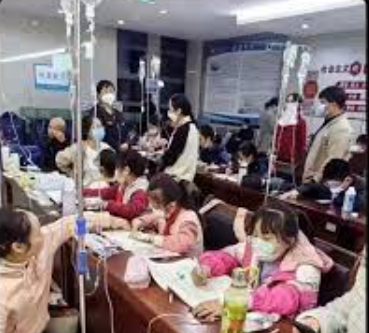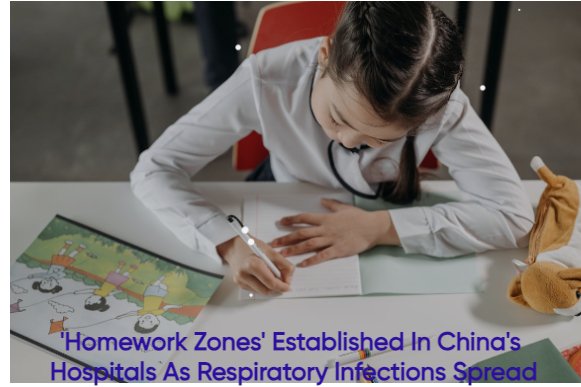Amidst the spread of respiratory infections, Chinese hospitals have introduced a distinctive initiative by establishing “study areas” for students who are unwell. This unconventional approach has triggered a lively debate on social media platforms. Some argue that it may impose undue academic pressure on students even during illness, while others contend that these study areas serve as a valuable resource, enabling students to pursue learning despite their health challenges. Advocates assert that such zones prevent students from falling behind in their studies and offer a semblance of normalcy during challenging times.
The ongoing debate is expected to persist as more hospitals across China adopt the practice of setting up study areas. Decision-makers must carefully consider the perspectives of both students and their families in determining the viability and impact of these designated zones.

According to reports from state broadcaster CCTV, hospitals in eastern China have arranged desks, chairs, and infusion stands to facilitate student learning within healthcare settings. Parents are actively involved in assisting their children with schoolwork, and hospitals are providing a supportive environment conducive to both academic engagement and recovery.
“I had not initially planned for my child to engage in homework here. However, witnessing the conducive studying environment within the hospital, I encouraged my child to work on his assignments as well,” shared a parent, as reported by the South China Morning Post.

Another father explained, “My child had to tackle his homework in this setting because failing to complete it here would mean a heavier workload upon his return to school after recovering.”
Highlighting the broader societal context, he added, “This is a societal issue. In ordinary families like ours, we feel compelled to adhere to the unwritten rule that irrespective of the circumstances, homework must be completed.”
In response to the surge in acute respiratory illnesses, China’s National Health Commission spokesperson, Mi Feng, stated on Sunday that the increase is associated with the simultaneous circulation of various pathogens, with influenza being the most prominent among them.

The surge gained international attention last week when the World Health Organization, prompted by a report on clusters of undiagnosed pneumonia in children from the Program for Monitoring Emerging Diseases, requested additional information from China.
China and the WHO have encountered inquiries regarding the transparency of reporting during the initial stages of the pandemic, which originated in the central Chinese city of Wuhan in late 2019. The WHO clarified on Friday that the recent illnesses did not involve the discovery of any new or unusual pathogens.
